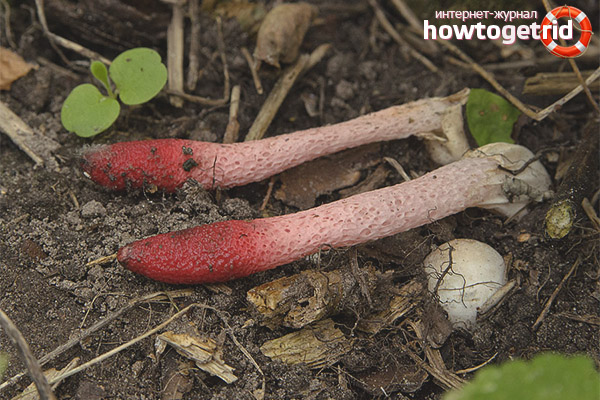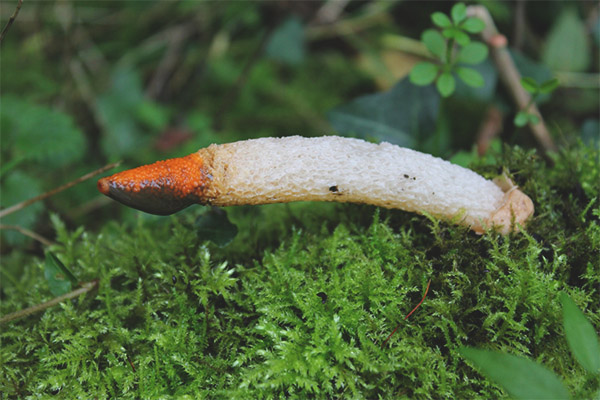The content of the article
It belongs to the family of veskov. This inedible mushroom does not look like its edible, well-known to us all relatives. Unlike boletus or white fungus, the mutinus does not have a familiar cap or a fruit stem.
Mushroom Growth Stages
Mutinus caninus goes through several alternating stages of development. At first it is only the fruit body. Inside it is a gelatinous mass, in the very center of which a fruit “leg” is formed. The fruit body itself at this stage has a diameter of up to three centimeters. It is light or slightly yellowish.
Then, as it grows, the top cover, called peridium, breaks into several pieces. Usually two or three. These parts fall to the base of the recipe. A prescription is a knob-shaped formation of a light yellow or dim orange color.It is about 10-12 centimeters long, and its diameter is one centimeter. The recipe ends with a sharp top with no cap. Inside it is hollow, its walls are made of spongy substance. The top is covered with hleb - it is a dark olive-green mucus that contains the spores of the fungus.
Another feature of this representative is the smell of carrion that exudes this mucus. This is what attracts insects that carry the spores of the fungus on their paws and abdomen. After pollination and transmission of the spore to the fungus, there is no longer any point in existing, therefore the destruction of the fruiting body begins. The top of the fungus changes color to bright orange. The completely fruitful body of a dog mutin disappears after three to four days.
Prevalence and seasonality
Growing more often one by one, less often you can find a group location. This mushroom loves to live in humid places, often seen in rotting wood or humus soils. The period from the last decade of June to October is the period of ripening of fruit bodies.
Similar mushrooms
In view of the obvious differences from the representatives of the kingdom of fungi, the mutinus canine, familiar to everyone, it is difficult to confuse them. However, they are similar to a fairly close view - Mutinus ravenelii. This fungus is even less common than Mutinus caninus, and is also inedible. It is possible to distinguish Ravenelli's mutinus from a dog by a bright red and white color.
Relatively similar fungus is the merry ordinary, which belongs to the same family as the mutinus. However, Phallus impudicus, common goner, has a clear cap. Veselka, by the way, is edible, but only at a young age.
Edible or poisonous?

People used to eat mushrooms. Is it possible to eat a dog mutinus? Experts say for sure that in the second stage the “adult” fruit body is inedible and dangerous to eat.But there is no data on edibility at a young age. Perhaps someday there will be experimenters who will want to test the hypothesis of the possibility of eating young fruit bodies, Mutinus caninus. However, today it is officially inedible mushroom. Experts caution against the use of canine mutinus as a food product.
Nature creation
Red Book
Back in the times of the Soviet Union, the Mutinus was added to the Red Book. Some experts believe that this happened due to insufficient study of this problem.About three decades ago, scientists tried to resume work on the topic of mutinus, but no global studies have been conducted.
Today, the canine mutinus is listed in the Red Book of the Russian Federation and many regional Red Books. In pure culture it is maintained in the collection of the Botanical Institute of the Russian Academy of Sciences.
Video: Mutinus Canine (Mutinus caninus)











To send